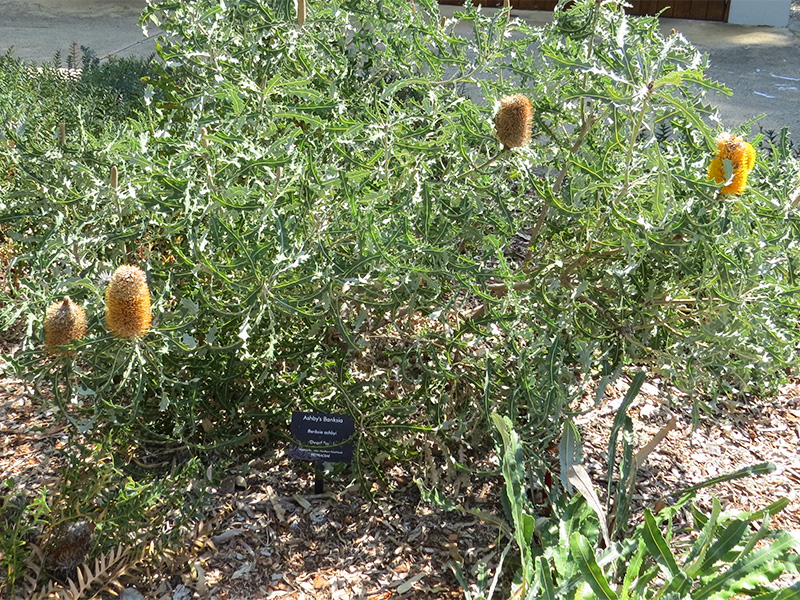| General Description | It is a lignotuberous shrub found in two forms; shrub or small tree. They are a fire-sensitive species and thus burns are required for seed release/germination. |
| Landscape | Ornamental plant, ideal for cut flower production, screen and windbreak. |
| Propagation | Seeds. Do not require any treatment and take 16 - 61 days to germinate.
|
| Cultivation | Full sun to partial-sahde. Well-drained soils. Tolerates moderate frost. Do not prune to old wood as this could kill the plant. Deep infrequent watering is best. |
| Notable Specimens | Kings Park and Botanical Garden, Perth, Australia. |
| Habitat | Red sand dunes near the coast from Exmouth to Geraldton extending inland.
|
| Flower/Leaf Bud Description | The seeds are enclosed in follicles attached to a woody cone and retained within the cone until burnt. |
| Leaf Description | Linear, deeply-serated and lobed that grow to 150 mm in length. |
| Flower Description | Cylindrical, tomentose spikes at the end of the bracnhes that produce nectar. They bloom from winter until spring. Flowers are 15 cm long and have a diameter of 10 cm.
|
| Colour Description | The flowers are bright orange or yellow. The foliage is a bluish-grey colour. |
